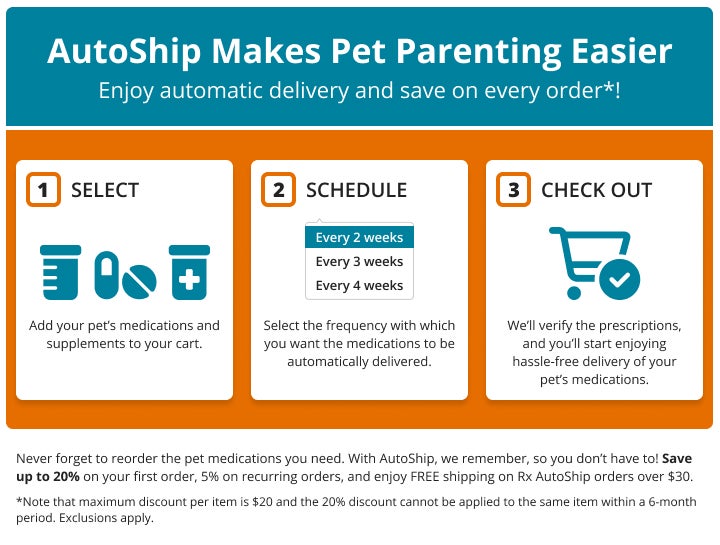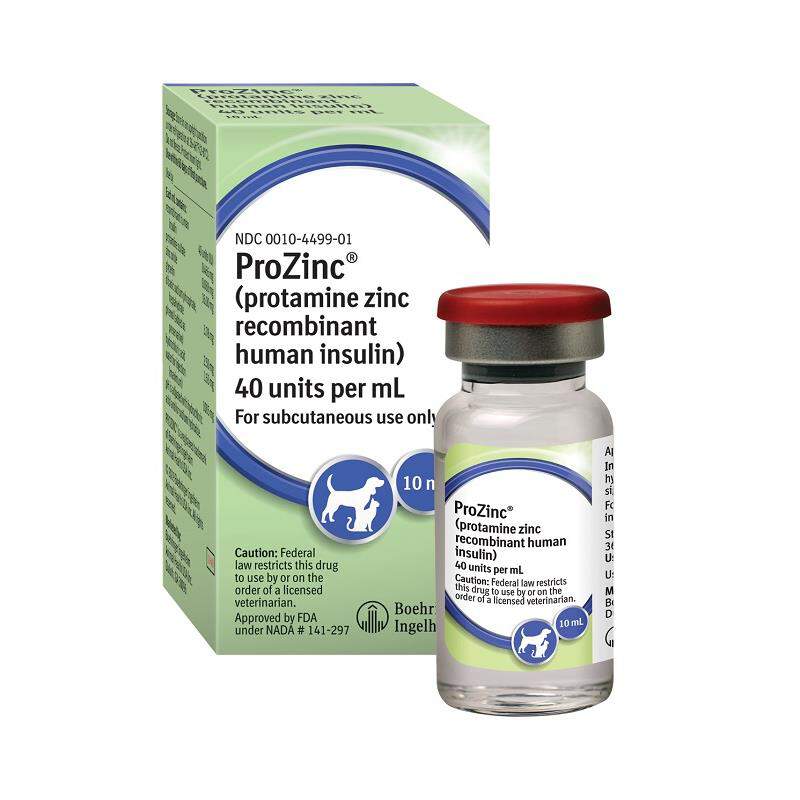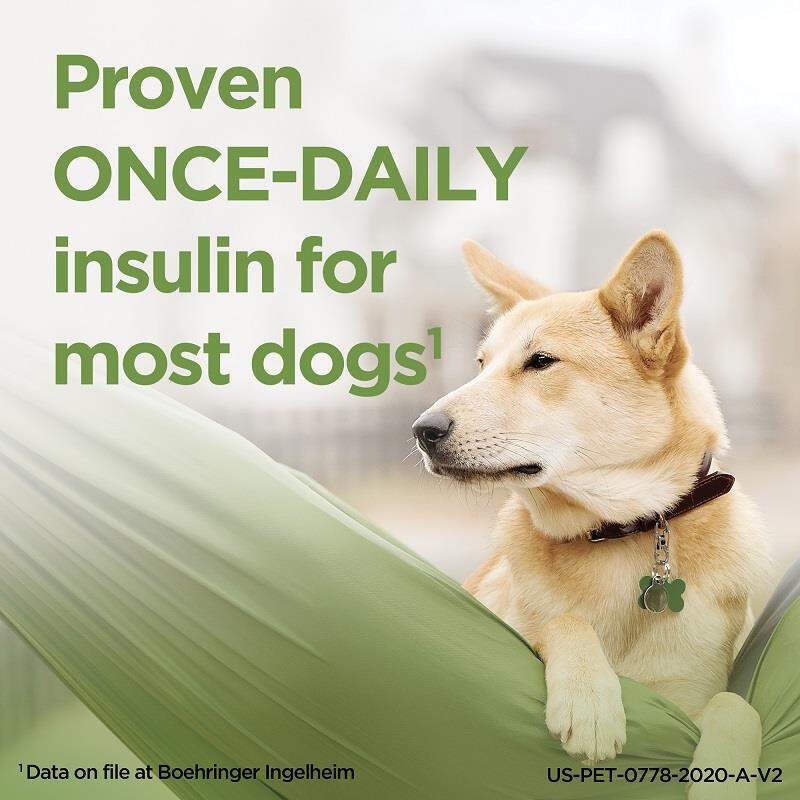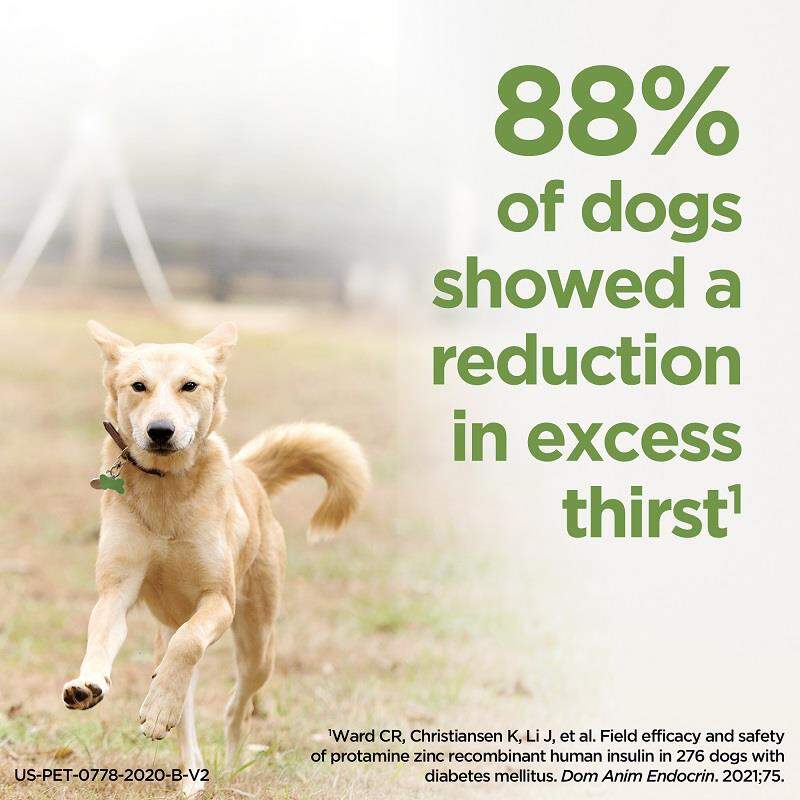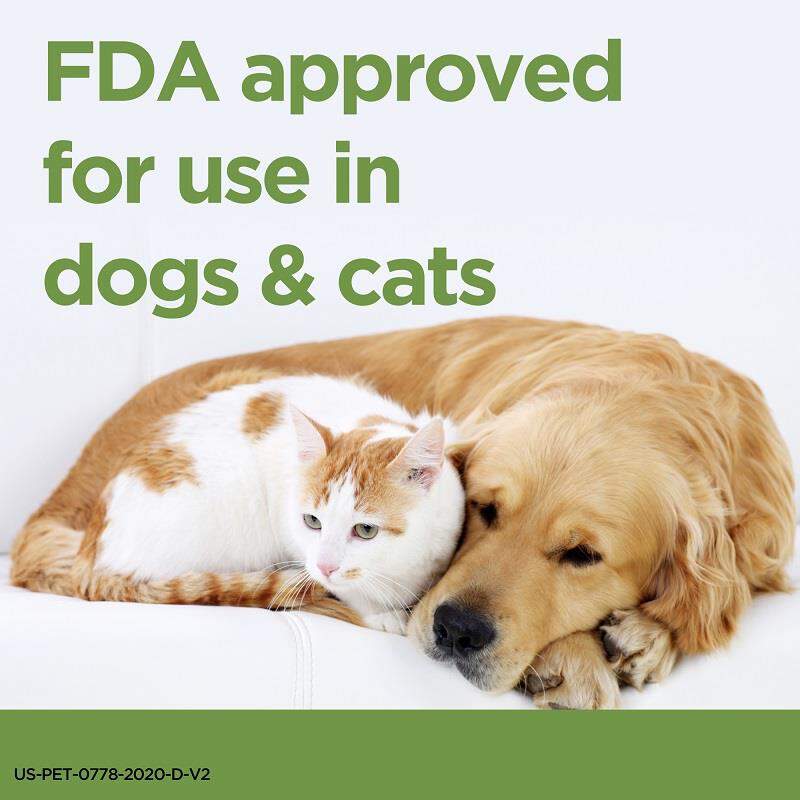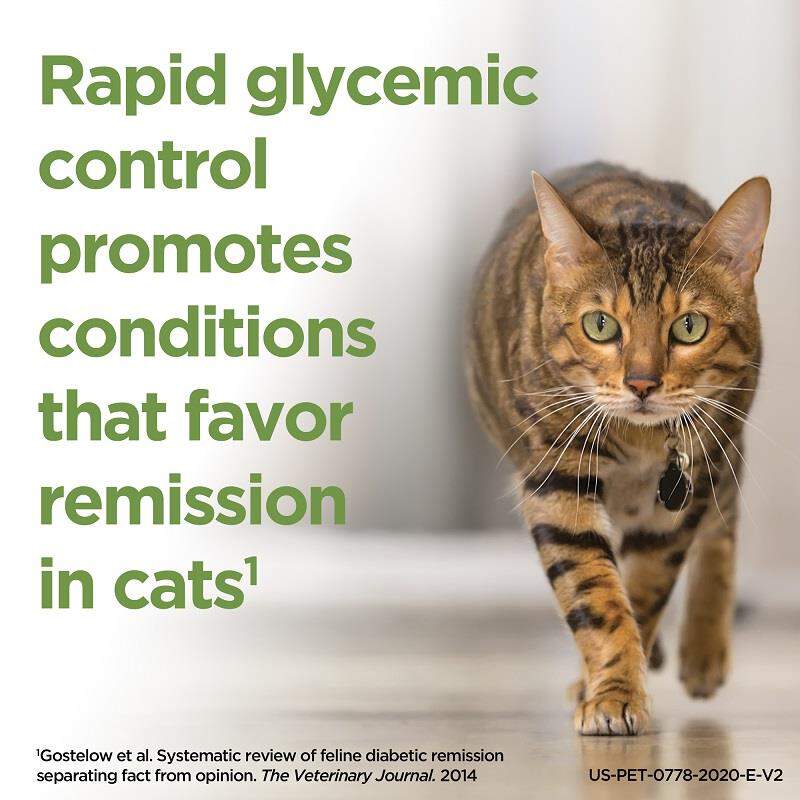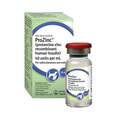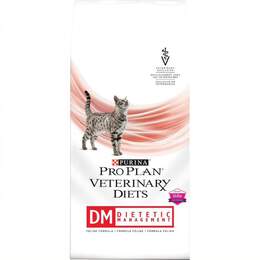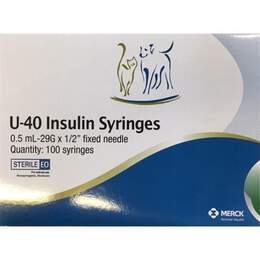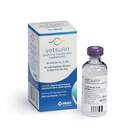

- Save on your Autoship
- Hassle-free: Easily Skip or Change Shipment Dates.
- Commitment-free: Cancel anytime
- Free Shipping.
With AutoShip, we remember so you don’t have to! Learn more
PROZINC® (protamine zinc recombinant human insulin)
is the
simple and reliable choice for diabetes control in dogs and cats. It
is a veterinarian prescribed injectable insulin for cats and dogs. With just
two daily doses a day in cats and once-a-day dosing in most dogs, delivered
before or just after a meal, PROZINC insulin provides predictable glycemic
control in pets with diabetes.1,2 A
single PROZINC injection has an appropriate duration of activity (10-14 hrs) in
cats and an extended duration of activity (16->24 hrs) in dogs.3
If your cat or dog has been diagnosed with diabetes mellitus,
you understand the importance of regulating blood glucose and controlling
clinical signs. With its appropriate duration of action in cats, and extended
duration of action in dogs, PROZINC® insulin will provide glycemic
control and help improve the quality of life of your cat or dog.1, 2
PROZINC® insulin should only be administered to the
cat or dog for whom it was prescribed, and at the dosage and frequency for
which it was prescribed. If you have any questions or concerns about the
product or about diabetes mellitus, talk to your veterinarian. PROZINC®
insulin requires refrigeration,2 as well as the use of U-40 syringes,2
which are sold separately.
References:
1. Gostelow R, Scudder C, Hazuchova K, et al. One-year prospective randomized
trial comparing efficacy of glargine and protamine zinc insulin in diabetic
cats. In: Proceedings from the American College of Veterinary Internal Medicine
Forum; June 8–10, 2017; National Harbor, MD. Abstract EN10. 2. PROZINC®
(protamine zinc recombinant human insulin) [Freedom of Information Summary].
Duluth, GA: Boehringer Ingelheim Animal Health USA Inc; 2019. 3. Ward CR,
Christiansen K, Li J, et al. Field efficacy and safety of protamine zinc
recombinant human insulin in 276 dogs with diabetes mullitus. Dom Anim
Endocrin. 2021: 75.
- FDA-approved first-line treatment for diabetes in cats, is available for use in dogs.1
- Extended duration of action of 16->24 hrs in dogs2
- Reduces hyperglycemia and hyperglycemia-associated clinical signs in both cats and dogs with diabetes mellitus 3,4
- Administered with pet-appropriate U-40 syringes4 (sold separately) to ensure accurate dosing and to minimize error
- PROZINC® (protamine zinc recombinant human insulin) has been rigorously tested for safety and efficacy in cats and dogs3
USE OF A SYRINGE OTHER THAN A U-40 SYRINGE WILL RESULT IN
INCORRECT DOSING. FOR SUBCUTANEOUS INJECTION ONLY. DO NOT SHAKE OR AGITATE THE
VIAL. PROZINC® insulin requires refrigeration at all times.
PROZINC® (protamine zinc recombinant human insulin) should
be mixed by gently rolling the vial prior to withdrawing each dose from the
vial. Once mixed, PROZINC® insulin suspension has a white, cloudy
appearance. Clumps or visible white particles can form in insulin suspensions:
do not use the product if clumps or visible white particles persist after
gently rolling the vial. Using a U-40 insulin syringe, the injection should be
administered subcutaneously on the back of the neck or on the side of the cat
or dog.
FOR CATS:
The initial recommended PROZINC® dose is 0.1 – 0.3 IU
insulin/pound of body weight (0.2 – 0.7 IU/kg) every 12 hours. The dose should
be given concurrently with or right after a meal. The veterinarian should
re-evaluate the cat at appropriate intervals and adjust the dose based on both
clinical signs and glucose nadirs until adequate glycemic control has been
attained. In the effectiveness field study, glycemic control was considered
adequate if the glucose nadir from a 9-hour blood glucose curve was between 80
and 150 mg/dL and clinical signs of hyperglycemia such as polyuria, polydipsia,
and weight loss were improved.
Further adjustments in the dosage may be necessary with changes
in the cat’s diet, body weight, or concomitant medication, or if the cat
develops concurrent infection, inflammation, neoplasia, or an additional
endocrine or other medical disorder.
FOR DOGS:
Starting dose: The recommended starting dose for
PROZINC® is 0.2-0.5 IU insulin/pound of body weight (0.5- 1.0 IU/kg)
once daily. The recommended starting dose for naïve dogs is the lower end of
the dose range. The recommended starting dose for dogs with poorly controlled
diabetes mellitus and transitioning from another insulin product is the mid to
higher end of the dose range based on the veterinarian’s experience with the dog’s
medical history and previous insulin dose. When transitioning from another
insulin, the dog’s blood glucose and general condition should be closely
monitored. When transitioning from another insulin, PROZINC® insulin
should be started once daily, regardless of the frequency of prior insulin use.
The dose should be given concurrently with or right after a
meal. The veterinarian should re-evaluate the dog at appropriate intervals and
adjust the dose and frequency based on both clinical signs and laboratory test
results (the blood glucose curve values and shape, nadir, and fructosamine)
until adequate glycemic control has been attained. In the effectiveness field
study, glycemic control was considered adequate if the glucose nadir from a
9-hour blood glucose curve was between 80 and 125 mg/dL, the maximum blood
glucose was < 300 mg/dL, and clinical signs of hyperglycemia such as
polyuria, polydipsia, or weight loss were improved.
Changing to twice daily dosing: Twice daily dosing should be
considered if the duration of insulin action is determined to be inadequate
with once daily dosing. Use caution when adjusting from once daily to twice
daily dosing because PROZINC® insulin may have prolonged duration of
action in some dogs (see Clinical Pharmacology). The veterinarian should
closely monitor the duration of action using blood glucose curves to avoid the
increased risk of hypoglycemia. If twice daily dosing is initiated, the two
doses should each be approximately 25% less than the once daily dose required
to attain an acceptable glucose nadir. For example, if a dog receiving 10 units
of PROZINC® insulin once daily has an acceptable nadir but
inadequate duration of activity, the dose should be changed to 7 units twice
daily (round down to the nearest whole unit).
Further adjustments in the dosage may be necessary with changes
in the dog’s diet, body weight, or concomitant medication, or if the dog
develops concurrent infection, inflammation, neoplasia, or an additional endocrine
or other medical disorder.
Protamine zinc recombinant human insulin


